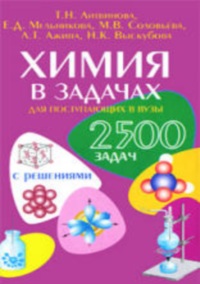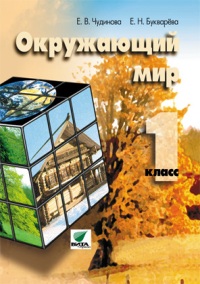John R. Vile – Constitutional Convention of 1787. A Comprehensive Encyclopedia of America’s Founding
895 ₽
Автор: John R. Vile
Название книги: Constitutional Convention of 1787
Формат: PDF
Жанр: Прочая историческая литература
Страницы: 1086
Качество: Изначально компьютерное, E-book
The first encyclopedic treatment of the personalities, politics, and events involved in drafting the U.S. Constitution.
• 350 A–Z entries and dozens of sidebars including persons, events, compromises, committees, constitutional provisions, and even trivia
• Two separate chronologies―one for day-to-day events at the Convention and one covering key events in the years surrounding the Convention
• Primary source documents including copies of the Declaration of Independence, the Articles of Confederation, and the U.S. Constitution and its amendments
• Extensive cross-references, a topical table of contents, bibliographical entries, a complete index, and maps
It i s exciting to be able to write an encyclopedia
on the United States Constitutional
Convention of 1787. Although I do not endorse
all the elements of his accompanying theory,
I believe that Bruce Ackerman (1991, 58) is
correct to identify the Constitutional Convention
as an important “constitutional moment.” Like
Ackerman, I consider this Convention, and the
events preceding and surrounding it, to be one of
the pivotal events in American history, an event
that has affected just about everything of political
consequence that has followed it.
I have sometimes read introductions to books
wondering whether the authors were being completely
candid about the “joys” of writing, particularly
when the work is, like this one, a fairly long
reference volume or volumes that include hundreds
of entries that might for the most part be
considered to have involved fairly menial labor. I
can nonetheless say with complete candor that
few of the scholarly projects I have worked on
have provided greater satisfaction than this. My
wife, two daughters, colleagues, acquaintances,
and anyone else who has fearfully watched the
ever-growing and -shifting stacks of books and papers
in my office can testify to my virtual obsession
with this project over a period of time that
has tested the endurance of even my closest
friends. During this period, the project grew from
one volume to two. In other projects my interest
has waned as the project proceeded, but I can
truly say that I became increasingly excited about
this project the longer it continued.
I take some comfort in the fact that my obsession
is apparently not unique. I have observed
that many individuals who have written on the
Constitutional Convention have returned to the
topic time and time again. Toward the end of this
project, I purchased a volume on the Constitutional
Convention that had been reissued at the
time of the Constitutional Bicentennial. It had
been suitably inscribed and signed by the editor
(the son of the original author), who then dated
his signature 1787! There were many days when I
certainly felt more pressed by the issues of 1787
than I did by the events of the passing hours.
As a professor who specializes in U.S. constitutional
law, I have long been fascinated by the
Constitution and the Convention that birthed it.
Indeed, I made my very first scholarly presentation
some 25 years ago on James Madison. It was
not, however, until relatively recently (and with a
good nudge from my editors) that I recognized
that there might be both a need and a demand for
a pair of volumes that would serve as a ready reference
to the Convention. There are, to be sure,
many fine narratives of the Constitutional Convention
as well as many specialized works that
deal with one or another aspect of the Convention’s
work (I have included many of these in the
essay “Motives of the Founding Fathers”). Moreover,
there are a number of volumes that present
encyclopedic treatment of the interpretations of
the various provisions of the U.S. Constitution.
At a time when encyclopedias and reference
works are proliferating, there is, however, no
other work like this that provides comprehensive
information about the Convention and its product
in a single readily accessible work. That is the
purpose of these volumes.
If the sidebar essays are included, this book has
more than 400 entries. Because the topics are so
varied, the book includes both an alphabetical
and a topical table of contents as well as an extensive
index. Because of these resources, I will not
describe all the entries in the following paragraphs,
but most fall into several broad categories.
People
There are, first of all, entries on people. If all the
individuals who participated in the ratification of
the Constitution were included, there would literally
be a cast of thousands. Somewhat less ambitiously,
this volume contains essays on each of
the individuals who attended the Convention as
well as contemporary Americans, like John
Adams and Thomas Jefferson, or foreigners, like
John Locke, David Hume, and Louis Montesquieu,
who influenced the ideas behind the
document. Fortunately, there are a number of
very helpful reference books that already catalog
the lives of most of the Framers and (especially)
the signers of the Constitution. I have relied fairly
heavily on two sources: M. E. Bradford’s Founding
Fathers (1981) and David C. Whitney’s Founders of
Freedom in America (1964) for basic biographical
information on most of the Founders and have
followed up with essays from the American National
Biography (1999). In contrast to some volumes
that largely focus on the personal lives of
the delegates, I have tried to concentrate primarily
on what each delegate said or did at the Constitutional
Convention, drawing chiefly from
notes of the Convention. Not every delegate
commented on every issue (indeed, some did not
speak at all), but in the cases of those who participated
actively in debates, I have generally organized
their comments for comparative purposes
into separate treatments of the legislative, executive,
and judicial branches of government, noting,
where possible, the manner in which they might
have altered their positions during convention debates.
Readers can, to be sure, garner such information
by reading the records of the Convention
(for which there can be no real substitute), but I
hope that the information I present here will be
far more accessible to both the layperson and
scholar alike, especially those who need help finding
the answer to a short-term problem.
Constitutional Provisions
The largest set of entries in this book consists of
entries on individual constitutional provisions
that emerged from the Convention. I am aware
that there are a number of scholarly studies on almost
all of these, but, in contrast to most of these
works, I have attempted to keep the primary focus
on what we know from records of debates at the
Convention itself rather than from subsequent
developments in constitutional interpretation. Although
I began my work with several months of
extensive and meticulous note-taking from Convention
records, as collected by Max Farrand
from the records of James Madison and other delegates,
I found Philip B. Kurland and Ralph
Lerner’s The Founders’ Constitution (1987), as well
as numerous other secondary sources, to be particularly
useful in checking and supplementing
my own findings as to the content and progress of
such debates at the Convention. States and Nations
I have included entries on each of the 13 states
then in existence as well as the states of Vermont,
Kentucky, Tennessee, and Maine, which were already
in the process of being born. In each case, I
have attempted to provide some background on
the constitution and governmental institutions
within each state. I have also introduced the delegates
who represented each state and included information
on how ratification of the Constitution
proceeded within each. One of the impetuses for the U.S. Constitution was the perceived threat
from foreign nations, so I have also included essays
on other major powers of the day and on previous
leagues or governments that served as
sources of information or inspiration for the delegates.
Events
I have included accounts of events, like the American
Revolution, Shays’s Rebellion, the Mount
Vernon Conference, the Annapolis Convention,
and other contemporary events that appear to
have directly influenced the calling and/or deliberations
of the Convention. Where such information
was available, I have also recorded the reactions
of members of the Convention to such
events.
Committees
Knowing about the use of comparable institutions
in Congress and other such bodies, I should
not have been surprised, but one aspect of the
Constitutional Convention that has impressed
me is how much work the delegates did in committee
and how little is written about, and how
little we generally know about, these committees.
I have accordingly identified 12 regular committees
(as well as the Committee of the Whole) at
the Convention and included an essay on each
identifying the individuals who served on it, the
issues the delegates entrusted to each, and the decisions
at which the committee arrived. I have
also included a summary essay on this topic.
Documents
As Donald Lutz has so convincingly demonstrated
(1998), there are literally hundreds of predecessors
to the U.S. Constitution. These include
colonial charters, the Mayflower Compact, state
constitutions, prior proposals for continental
union, the Articles of Confederation, and the Virginia
Declaration of Rights. In addition to entries
on such predecessors, I have included some
generic entries that treat such documents collectively.
Plans and Forms of Government
This book includes essays on at least five plans
that were prepared for the Convention. These include
the Virginia, New Jersey, and Hamilton
Plans, which were actually discussed as well as the
Pinckney and Dickinson Plans, which were not.
The Framers were classically educated, and they
were aware that governments fell into certain
generic forms, especially those related to whether
governments were governed by the one, the few,
or the many and those related to whether, and
how, powers were divided between central and regional
authorities. I have included entries on the
forms of government with which the Framers
were most familiar. I have generally used modern
terminology but have tried to indicate where such
terminology has changed. Thus, I have an entry
on unitary government but explain that the
Framers would have called this either a “national”
or a “consolidated” government. Readers should
also be able to trace how the term “federal”
changed from a designation for a government like
that under the Articles of Confederation, which
scholars today designate as a “confederal” government,
to a government like that which the Constitution
created.
Ideological Influences
One of the difficulties in interpreting the Constitution
is that of ascertaining the primary political
philosophy that motivated its Framers. Historians
and political scientists have divided in recent
years into those who believe the Framers were primarily
motivated by the natural rights philosophy
of social contract theorists like John Locke (a view
often associated with historian Louis Hartz
[1955]) and those who believe their work was
founded on republican Whig ideology—sometimes
identified with the English “Country” Party
(as delineated by historians Bernard Bailyn [1967] and Gordon Wood [1969]). Scholars have
clouded the picture still further by citing the
Framers’ reliance on classical history, emphasizing
how contemporary events shaped the thoughts of
the Founders, or highlighting the role of Scottish
Enlightenment thinkers or Protestantism.
A reference book is certainly not the place to
settle the controversy over respective influences.
My own considered judgment is that each delegate
represented a somewhat different mix of influences
and that some were more clearly “republican,”
“liberal,” or “Protestant Christian” than
others. I have accordingly included essays on all
these movements and have tried to include
enough secondary reference materials for individuals
who are so inclined to follow various lines of
influence and weigh the relationships among
them. For the most part, however, I have let delegates
speak for themselves by trying to stay faithful
to the arguments that they advanced within
the Convention.
Ideas
We associate the Constitution with a number of
ideas and principles that are not specifically stated
there. Neither “checks and balances” nor “separation
of powers,” for example, is listed there, but
scholars generally consider both terms to be important.
Similarly, delegates to the Convention
frequently discussed the ideas of corruption and
virtue (albeit not always with meanings that we
would attribute to them today), and they listed
the idea of promoting justice in the Preamble. In
part because such terms, and others like them, do
not always appear in the index to the records of
the Convention, and because there is no concordance
to them, such terms are easy to miss. I have
included essays on key terms that I have been
able to identify.
Ratification
It is difficult to separate the process of constitutional
construction from that of constitutional
ratification. Although I deal in these volumes primarily
with the former, I have included some entries
that relate to the latter. These include some
discussion, under each state, of ratification debates
that occurred there. I have also included essays
on Federalists, Antifederalists, the Bill of
Rights, and other issues that delegates fleshed out
during this debate.
Miscellaneous
Because of its pivotal role in U.S. history, there
are books and articles on all kinds of topics related
to the Constitutional Convention. I have
accordingly provided entries on the weather, the
city of Philadelphia, the Pennsylvania State
House, and other topics that help illuminate the
context of this extraordinary event. At my editor’s
suggestion, I have included some information
that I thought would give further context to the
proceedings in sidebar essays.
Other Helps
It is common practice to include a copy of the
U.S. Constitution in books that discuss the Constitutional
Convention. I have followed this practice
but have also included other documents that
appear to have influenced the fundamental law.
The documents selected are suggestive rather than
exhaustive of the influences on this document. I
have also included a table of contents, a bibliography,
and an index.
There are few essays in this book that did not
rely on the four-volume Records of the Federal Convention
(1937), which historian Max Farrand compiled,
as well as a subsequent fifth volume edited
by James Hutson (1987). I have tried to indicate
the sources that were most helpful in compiling
each entry as well as compiling a bibliography for
the volumes as a whole.






Отзывы
Отзывов пока нет.